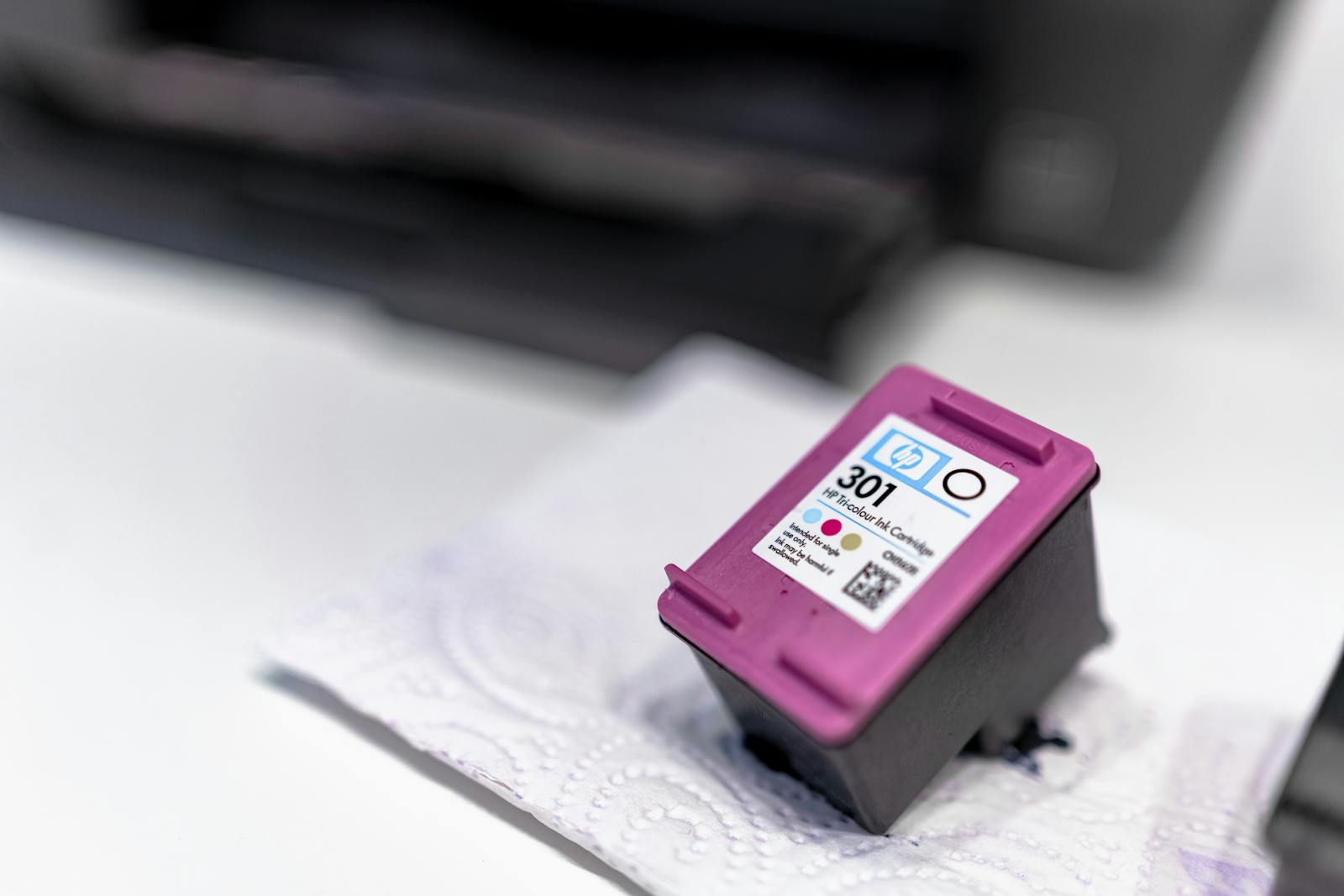Printer ink plays a crucial role in bringing digital creations to life on paper. Printer ink works by using small nozzles that spray tiny drops of ink onto the paper to create text and images. This process varies between different types of printers, like inkjet, laser, and LED printers, each with unique methods for transferring ink.
Inkjet printers utilize a sophisticated system with nozzles that project ink at extremely high speeds. They work by heating the ink to form tiny bubbles that can burst and shoot ink onto the paper. On the other hand, laser printers use a laser beam to form static electricity on a drum, which then attracts toner powder. The toner is then transferred to paper and fused with heat to create a lasting image.
Understanding the mechanics behind printer ink can help users appreciate the technology in their printers. Without the precision and advancement in technologies, printing images and text with such clarity wouldn’t be possible. This knowledge also helps in making informed decisions about the type of printer and ink to use for specific needs.
How Do Printers Work?
Inkjet Printers
These printers spray tiny ink drops onto paper. A print head moves back and forth across the page. It has tons of small nozzles that spray the ink. Some printers heat the ink to make it spray. Others use a small crystal that changes shape when electricity hits it. This makes the ink shoot out.
Laser Printers
These printers use a powder called toner. First, a laser “draws” the image on a drum inside the printer. The toner sticks to the drum where the laser hit it. Then, the drum rolls over the paper, and the toner gets stuck to it. Heat and pressure help the toner melt into the paper so it stays put.
Different Types of Ink
You can find two main types of ink for inkjet printers:
| Type | Pros | Cons |
|---|---|---|
| Dye-based Ink | Bright, vivid colors | Can fade over time |
| Pigment-based Ink | More resistant to fading | Colors might not be as bright |
Most printers use four basic colors:
- Cyan (blue)
- Magenta (red)
- Yellow
- Black
These colors can be mixed to make all the other colors you see in your prints.
Other Cool Facts
- Some printers have extra colors, like light cyan and light magenta, for even better photo printing.
- Printer ink is super expensive because the companies spend a lot of money on research and development.
- You can recycle your empty ink cartridges.
That’s the gist of how printer ink works! It’s pretty cool tech, right?
Key Takeways
- Printer ink sprays tiny drops onto paper to create images and text.
- Inkjet and laser printers use different methods for transferring ink.
- Understanding printer technology aids in making informed choices.
Understanding Printer Technology
Printer technology has evolved to include various methods for transferring digital images and text onto paper. Two main types, inkjet and laser printers, use different techniques to achieve this.
Inkjet Printers: Mechanisms and Materials
Inkjet printers use multiple tiny nozzles to spray ink onto paper. They rely on either thermal or piezoelectric methods.
In thermal inkjet printers, heat creates ink bubbles. Each bubble expands, pushing ink through a nozzle. This ink lands on the paper, forming an image. Once the bubble bursts, a vacuum pulls more ink into the print head.
Piezoelectric inkjet printers use electric charges. They cause piezo elements to vibrate, pushing ink out without heat.
Materials in inkjet printers include dye-based or pigment-based inks. Dye-based inks produce vibrant colors. Pigment-based inks offer greater durability and are used for documents needing longevity.
Laser Printers: How They Differ
Laser printers use a laser beam to create images on a drum. This drum is coated with a photosensitive material.
A laser projects the image onto the drum. The light alters the electrical charge in targeted areas. These charged areas attract powdered toner, which sticks to the drum.
The drum rolls the toner onto a sheet of paper. Heat then fuses the toner to the paper, creating a permanent image.
Laser printers generally work faster than inkjet printers. They are ideal for high-volume printing and produce sharp text and graphic quality.
Laser technology is also more cost-effective over time, due to toner cartridges lasting longer than ink cartridges.
Components and Operations
Printers use several components that work together to transfer ink or toner onto paper, creating text and images. Key parts include the ink or toner cartridges, the print heads, and the mechanisms that convert digital data into physical media.
The Role of Printer Ink and Toner
Ink and toner are essential in any printing device. Inkjet printers use liquid ink held in cartridges. Each cartridge contains a mix of pigments and dyes that deliver vivid colors. In contrast, laser printers use toner, a fine powder stored in a cartridge.
Inkjet cartridges have precise chambers for different colors. These colors blend at the print head to form the desired image on paper. Toner consists of solid particles that fuse to the paper when heated. High temperatures in the fuser unit make the powder stick.
Print Heads and Nozzles: Precision Delivery
The print head is a crucial part of an inkjet printer. It sits under the ink cartridges and moves across the paper, depositing tiny droplets of ink. The nozzles, which are small openings in the print head, control the ink flow.
Thermal inkjet print heads use heat to create bubbles in the ink. As these bubbles burst, they push droplets out of the nozzles. Piezoelectric print heads use electric currents to change the shape of crystals, which then force droplets out. Both methods need precise control to achieve high resolution and clarity.
From Digital Data to Physical Media
The process that turns your digital files into physical prints starts with the printer’s circuit. The circuit reads the digital data, converts it into electrical signals, and controls the print head’s movement. In laser printers, a laser beam draws the image on a photoreceptor drum before toner is applied.
Ink and toner are then transferred to the paper, where they adhere either via direct contact (in impact printers) or without touching the paper (in non-impact printers, like inkjet and laser). The images and text produced have sharpness and detail, measured in dpi (dots per inch).
These components and operations ensure that the final print matches the digital design with precision.
Frequently Asked Questions
This section addresses common queries about printer operation such as how they function, detect ink levels, and apply ink to paper.
What is the working principle of an inkjet printer?
Inkjet printers work by spraying tiny droplets of ink through nozzles onto paper. The ink is ejected from cartridges using heat or vibration, creating text and images.
How does a laser printer function?
Laser printers use a laser beam to produce an image on a drum. The drum is then rolled through toner, which sticks to the charged areas. The toner is transferred to paper and fused using heat.
What are the steps involved in a printer’s operation?
The main steps include receiving a print command, processing the document, feeding paper, applying ink or toner, and ejecting the paper. Each step is automatic and coordinated by the printer’s control system.
How do printers detect ink levels?
Printers detect ink levels through sensors that monitor cartridge ink levels. Sometimes, software estimates ink usage based on print volume. When low, the printer alerts the user.
What method does a printer use to apply ink to paper?
Inkjet printers spray ink through microscopic nozzles. Laser printers transfer toner from a drum to the paper. Both methods aim for precision to ensure clear output.
How does ink dry within a printer?
Ink dries on paper when it leaves the printer. The drying process depends on the ink type and paper used. Heat and air exposure aid in quick drying, preventing smudging.







